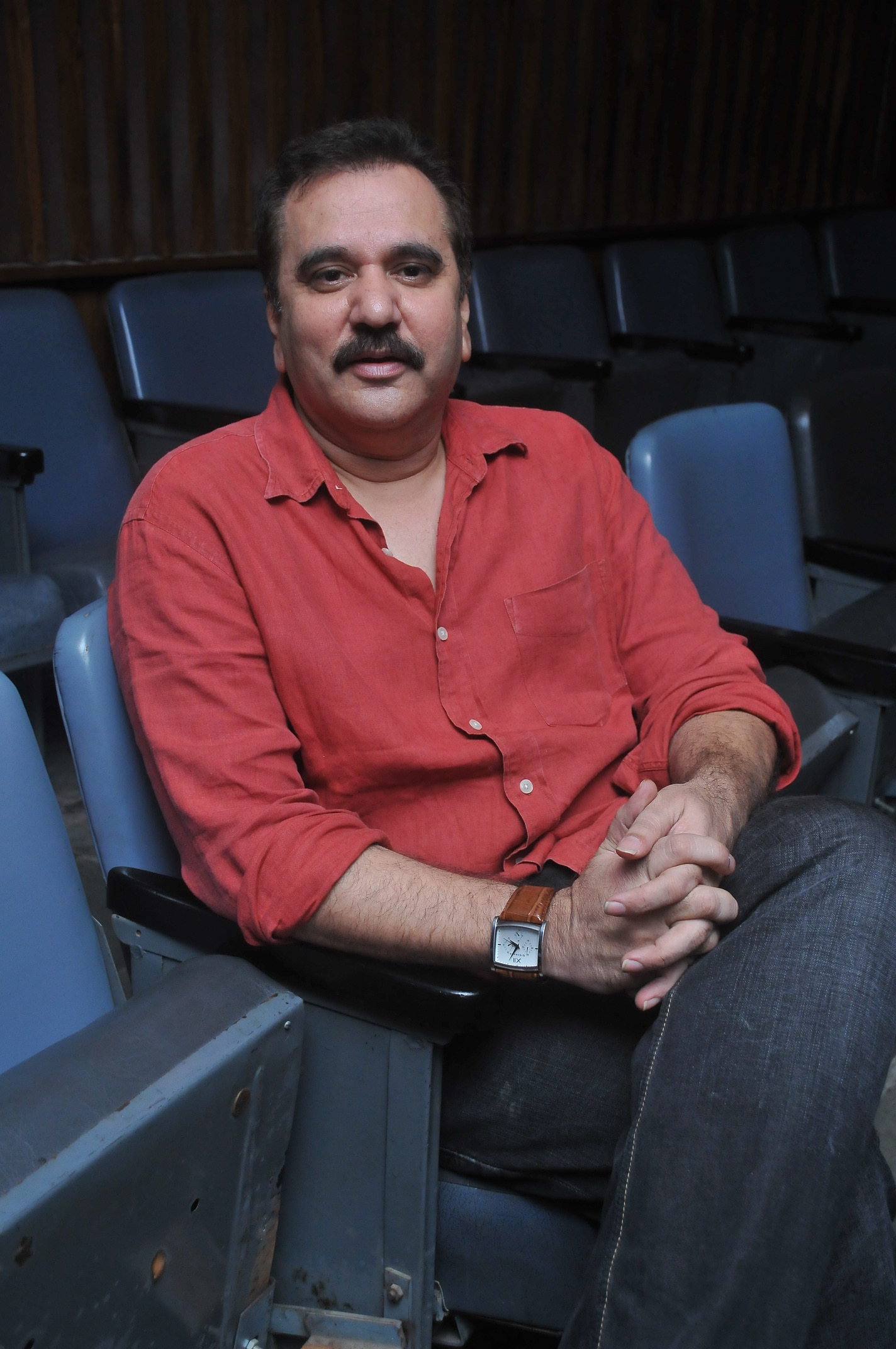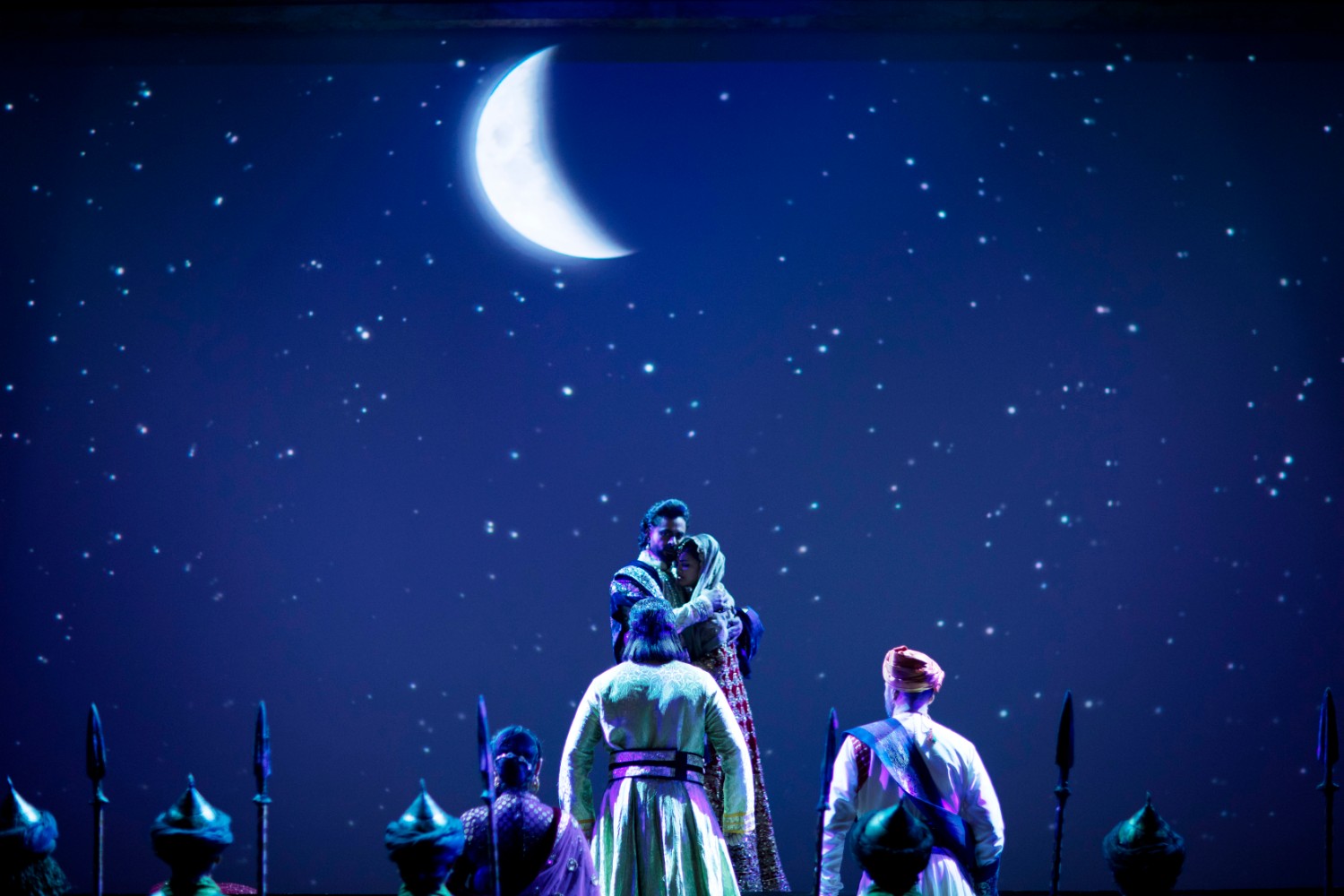What was the experience like?
While K. Asif made the film over 10 years, I had to do it in two-and-a-half-months. I thought I had shot myself in the foot. Three days before the show I thought it was just the worst thing to have come up on stage. I have never felt so depressed.
Even today though I hear so much praise, the trauma of that day continues to haunt me. Fortunately, on the final day everything just came together.
It had happened in Tumhari Amrita also. But there we would have gotten away with because that was supposed to be only for four shows. When we did Amrita, we had 10 people in the grand rehearsal and eight of them dozed off. Only two of them were awake.
With Mughal-e-Azam I was ready to accept disaster. But it all came together beautifully on the final day and the rest as they say is history.
Feroz Abbas Khan, a theatre and film director, playwright and screenwriter who is known for his plays such as Tumhari Amrita and Saalgirah, is also the director of the Broadway-style musical, Mughal-e-Azam. The musical with a cast of 150 people including 40 kathak dancers has performed in Mumbai, Ahmedabad, Dubai, Kuala Lumpur and Singapore. It has come to Delhi for its third season having performed in the capital in 2017 and 2018.
We chatted with Khan about the challenges of adapting an iconic film on stage, how the musical is different and what's next for him. Excerpts:
Live singing is a very bold move. What was the reason behind it?
Because if it's not live singing, it is not a musical so why have the play at all. When people come to watch a play it has to be totally live. If you are giving lip movement then it is not a musical play.
I wish I had spaces where I could get live musicians on stage. In fact, for my next play I am looking at doing that.
Broadway has theatres, spaces designed for musicals. We don't have that here.
There are certain scenes from the movie that are memorable, such as the feather scene. Have you tried to replicate them?
That scene is a close-up and I can't get a close up because I only have one frame. So we created the whole atmosphere but the actual scene has not been replicated. It's a beautiful scene and it can only be done by Dilip Kumar and Madhubala and no one else.
So what is next for you?
I have more plays lined up. I will do more musicals. I am going to do theatre for some time. I am not looking at films right now, may be later.
Mughal-e-Azam is performing in Delhi from April 6 to April 14 at the Jawaharlal Nehru Stadium. Tickets are available on BookMyShow
How is it different?
This play has a very strong female voice. It's more feminine than the film. In the original the focus was on Shahenshah and the men could mistreat the women. For instance, in the film Salim slaps Anarkali when he finds out that she has gone and made a deal with Akbar. We removed all that from the play. In the play the women talk back to the men in a strong way. Even Jodha speaks her mind. The women are not submissive. That has made it more contemporary.
Our cast is also primarily women. Yes there are courtiers but it is the women who are singing live so it's primarily their show.
Today's generation falls in and out of love on Instagram. So for them it is difficult to believe that a woman would die for love. But still there is something very beautiful about a love story. I had to give the aesthetics of today. It is a period piece but it has modern sensibilities.
You talk about women of today being strong characters, but Anarkali herself was a very strong character.
Of course Anarkali is a very strong character. To be able to say 'Pyar Kiya Toh Darna Kya...' She was ahead of her times. To be able to challenge the mightiest there was. The reason the younger generation is able to connect with the play is because of Anarkali and not because of Akbar or Salim. The spirit of Anarkali is the same in the film and the play.
How did Mughal-e-Azam the musical come about?
I had been thinking of doing a musical for a long time. When I started out I had done a big musical in Gujarati. It was called Ewa Mumbai Ma Chaal Jaaiye, inspired by West Side Story. That was in 1990.
But then I realised that the challenges of doing huge productions are traumatic, even though it is a great experience. We do not have auditoriums and theatres to do musicals. We make auditoriums for everything. Wahan shaadi bhi hoti hai, shok sabha bhi hoti hai aur natak bhi hota hai (There marriages take place, memorial services are also held and so does theatre).
That was one of the major reasons that I decided to do minimal productions like Tumhari Amrita. I found more power in not being subjected to all the technical complexities of production and being able to create powerful theatre experiences with very minimal requirements. Theatre's power lies in the minimum. It is a small, little space in which we create so many worlds. So by its own nature everything becomes symbolically powerful rather than realistically as it does in cinema.
However, it had been weighing on my mind for a long time that I wanted to do a musical. The first time I thought about Mughal-e-Azam was when we were doing Tumhari Amrita in Hyderabad and I went to see the coloured version of the film with Shabana Azmi and Farooq Shaikh. Farooq and I were very sceptical. We thought that the black and white film had captured such beauty. Black and white allows your imagination to fill in, while colour defines it. And memories are very precious.
However, we were again hugely affected by the film. It was also the first time I looked at it more closely. By now I was a practicing theatre director. The first time I had watched it I was a regular cinegoer. But now I was watching it with a different eye. And I realised that it has a very theatrical structure. And that's because it is actually inspired by a play. K. Asif had first seen the play Anarkali in Lahore. So I kept mulling over it and I thought maybe one day I could get an opportunity to do Mughal-e-Azam.
Then over the last few years I was engaged in a project called 'Main Kuch Bhi Kar Sakti Hoon', an entertainment-education programme by an NGO called Population Foundation of India which uses the medium of television for family planning through women empowerment.
I had a break in between that and I thought let's do Mughal-e-Azam. So I went and met the people at Shapoorji Pallonji since they had the rights to the film. I told them what royalty we paid and they were slightly amused. But there was a person there who I really call visionary -- Deepesh Salgia. Though he is a hard core real estate guy he is always thinking out of the box. He looked at it as an opportunity and offered to produce the show.
Thereafter, it was a terrific journey. The only thing he was concerned about was that it should have the scale of the original. So it is to his credit that the musical became such a grand affair.

Feroz Abbas Khan is the director of plays such as Tumhari Amrita and the man behind the musical Mughal-e-Azam

Mughal-e-Azam (1960) is the most expensive film ever made in India (inflation adjusted) and Mughal-e-Azam: The Musical (2016) is the most expensive theatre production from India

The cast and crew travels with a team of 150 and intricate sets weighting 10,000 kg

Songs such as 'Teri Mehefil Mein’ and ‘Pyaar Kiya to Darna Kya' from the original film are performed live

550 costumes have been painstakingly designed by Manish Malhotra
Today after over 170 shows, how much has it changed?
The beauty of a live theatre experience is that it's the same thing and yet it is very different. It has become far more deeper. It's much more solid.
For me Delhi is very special. The Delhi production is double the size of the Mumbai production. It's really quite massive. I feel that Mughal-e-Azam has realised itself in terms of its scale in Delhi. We have 40 dancers in Delhi.
What were the challenges of adapting an iconic film into a play?
The biggest challenge is to confront the memories of the people and make sure that they don't get disappointed. It takes around 15 minutes and after that people accept it. I met this filmmaker who said for the first 20 minutes he was resisting it but then the floodgates opened. Once he went beyond the film, he experienced the musical for what it is and loved it.
It was important that the actors did not imitate the stars. I don't want comparisons being drawn. I needed each of the actors to be original. For the first two weeks I was just rehearsing to get the sounds of the original out of their system. Because the moment you speak any dialogue of Mughal-e-Azam, the original cast is ringing in your head. So I had to remove that. Then you had a very fresh slate on which they wrote their own performance.
And the fact is that they are singing live so that takes it to a whole new level. So it is the same Mughal-e-Azam and yet it is very different.

The film was originally produced in 1960 by Shapoorji Pallonji, the same company also released its colour version in 2004. Interestingly, Shapoorji Pallonji has also produced the musical play











